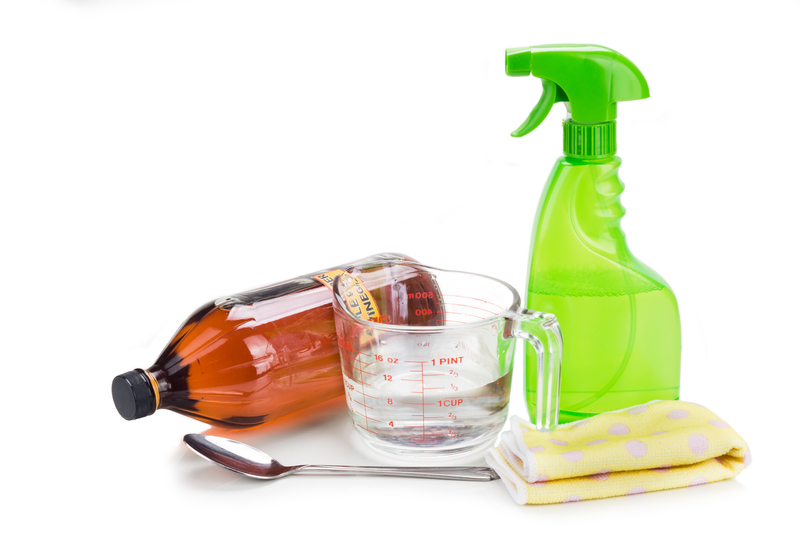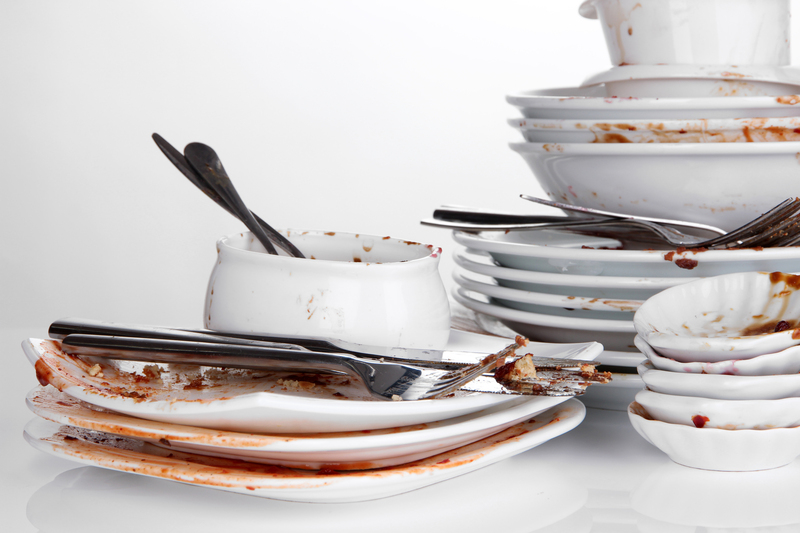Jewelry Cleaning Basics Everyone Should Know
Posted on 25/08/2025
Jewelry Cleaning Basics Everyone Should Know
Jewelry is cherished for its beauty, symbolism, and sentimental value. Whether it's a family heirloom, an engagement ring, or a trendy fashion piece, keeping your treasure sparkling bright isn't just about aesthetics--it's about maintaining its quality and longevity. Learn the jewelry cleaning basics everyone should know to retain the brilliance and luster of your favorite pieces for years to come.
Why Is Cleaning Your Jewelry Important?
Over time, jewelry collects oils from your skin, lotions, dust, and other residue, causing pieces to lose their original shine. Additionally, everyday exposure to air and moisture can lead to tarnish, especially on silver pieces. Regular cleaning not only restores beauty but also prevents long-term damage and keeps your pieces hygienic.
- Maintains Sparkle: Removes dirt and grime that dulls stones and metals.
- Preserves Value: Prevents irreversible damage such as tarnishing and corrosion.
- Improves Longevity: Strengthens the setting and structure by preventing buildup.
- Promotes Hygiene: Eliminates bacteria trapped in settings and crevices.

Knowing Your Jewelry: Identifying Materials and Stones
Not all jewelry is created equal. The method used for cleaning varies substantially depending on the materials involved. Before cleaning, inspect your pieces and familiarize yourself with their main components:
- Precious metals: Gold, silver, platinum
- Gemstones: Diamonds, sapphires, emeralds, rubies, opals, pearls, etc.
- Costume jewelry: Often contains non-precious metals and simulated stones
When in doubt, consult a professional jeweler for advice, especially with vintage pieces or unknown gemstones to prevent potential damage.
General Jewelry Cleaning Guidelines
While methods differ, some fundamental jewelry cleaning principles apply to almost every piece:
- Avoid harsh chemicals: Substances like bleach, acetone, and chlorine can damage metals and cloud gemstones.
- Use gentle tools: Opt for soft toothbrushes, lint-free cloths, and microfiber towels to avoid scratches.
- Mind water temperature: Lukewarm (not hot) water is best, as extreme heat or cold can shock delicate stones.
- Dry thoroughly: Moisture left on jewelry can promote tarnish or degrade adhesives.
- Store jewelry properly: After cleaning, keep pieces in clean, dry locations, ideally in individual pouches or compartments.
Frequency: How Often Should You Clean Your Jewelry?
The ideal jewelry cleaning frequency varies. For frequently worn items like wedding rings or everyday earrings, a gentle weekly cleaning is beneficial. Pieces worn less often may only require cleaning every couple of months or before special occasions.
DIY Jewelry Cleaning Methods
Cleaning Gold Jewelry
Gold is resistant to tarnish but collects oil and dirt over time. For basic gold jewelry cleaning:
- Mix a bowl of warm water with a few drops of mild dish soap.
- Soak your gold jewelry for 15-20 minutes.
- Gently scrub with a soft toothbrush, especially in crevices.
- Rinse thoroughly in clean, lukewarm water.
- Pat dry with a lint-free or microfiber cloth.
Cleaning Silver Jewelry
Silver jewelry is prone to tarnishing. Here's a safe home method:
- Line a small bowl with aluminum foil (shiny side up).
- Add hot water, a tablespoon of baking soda, and a pinch of salt.
- Place the silver pieces onto the foil so they touch it.
- Let soak for 2-5 minutes; the tarnish will transfer to the foil.
- Rinse and gently buff dry.
Note: Do not use this method on silver pieces with pearl, opal, or other delicate stones.
Diamond & Gemstone Jewelry Cleaning
Hard, non-porous stones like diamonds, sapphires, and rubies can generally handle mild soap and water. To clean:
- Soak in a solution of warm water and dish soap for 15-20 minutes.
- Use a soft brush to clean around the setting and under the stone.
- Rinse in clean water and dry thoroughly.
Tip: Avoid ultrasonic cleaners for stones with inclusions or fractures, as vibrations can exacerbate cracks.
Pearl and Soft Stone Jewelry Cleaning
Pearls, opals, turquoise, and similar gems are porous and sensitive. For these:
- Use a soft, damp cloth to gently wipe the surface.
- Never soak pearls or soft stones in water.
- If deeper cleaning is needed, consult a jeweler.
Store pearls flat in a cloth or pouch to avoid stretching the silk thread.
Costume & Fashion Jewelry Cleaning
Costume jewelry often features glued stones, painted surfaces, and non-precious metals. Excess moisture may damage these:
- Wipe gently with a slightly damp cloth.
- If necessary, dab a bit of diluted dish soap on a cotton swab.
- Dry immediately to prevent water spots or dislodging stones.
Common Jewelry Cleaning Mistakes to Avoid
- Using abrasive materials: Paper towels, tissues, or rough cloths can scratch metals and stones.
- Soaking glued pieces: Water breaks down adhesives used in many fashion pieces.
- Mixing chemicals: Combining cleaning agents can create toxic reactions or cause damage.
- Exposing to harsh environments: Pools, hot tubs, and gym showers expose jewelry to chlorine and salt, accelerating tarnish and weakening settings.
Professional Jewelry Cleaning & Maintenance
While home care is essential, scheduling professional jewelry cleaning at least once a year--a must for high-value pieces and engagement rings--helps catch loose stones, prong wear, and other issues. Jewelers use ultrasonic or steam cleaners and inspect for necessary repairs.
- When to see a professional:
- Heirloom or vintage jewelry
- Pieces with intricate designs
- Jewelry showing signs of damage, warping, or loose gemstones
- High-value diamonds and gemstones
Jewelry Cleaning Tools & Products Worth Having
Elevate your cleaning routine using quality supplies designed for safe and effective jewelry cleaning:
- Soft-bristled brushes (child-sized toothbrushes or those made for jewelry)
- Microfiber or polishing cloths
- Jewelry-specific liquid cleaners (follow directions and ensure compatibility)
- Baking soda and mild dish soap for homemade solutions
- Jewelry cleaning wipes for travel
Read product labels: Never use silver cleaning dips or harsh chemicals on jewelry containing pearls or other sensitive stones.
Storing and Protecting Clean Jewelry
After cleaning, proper storage is crucial to keep your pieces dazzling:
- Store individually: Use soft pouches or separate compartments in a jewelry box to prevent scratching and tangling.
- Reduce exposure: Keep jewelry away from humidity, sunlight, and harsh chemicals (like perfumes and hairspray).
- Regular inspections: Check for loose clasps or stones before putting away.
- Use anti-tarnish strips: Place in storage containers to slow silver tarnishing.
Extending the Life of Your Jewelry
Combine regular cleaning with good habits for the best jewelry lifespan:
- Remove jewelry before swimming, bathing, exercising, or cleaning.
- Put jewelry on after applying makeup, perfume, and lotions.
- Check prongs and settings frequently for damage.
Tip: Creating a jewelry cleaning schedule and inspecting your favorite pieces monthly can save you costly repairs down the road.

FAQ: Jewelry Cleaning Basics
Can I use toothpaste to clean my jewelry?
It's a common myth, but toothpaste is too abrasive. It can scratch metals and softer stones. Stick to mild soap and water instead.
Are ultrasonic cleaners safe for all jewelry?
Not always. While they're excellent for plain gold or diamond jewelry, they may loosen stones, damage pearls, opals, and vintage glued items. Check manufacturer guidance first.
What's the best homemade jewelry cleaner?
For most pieces, a mixture of lukewarm water and a few drops of dish soap is safest and most effective.
Conclusion: Mastering Jewelry Cleaning Essentials
With these jewelry cleaning basics, even novice collectors can confidently maintain their jewelry's sparkle and structure. Remember: always identify your piece's materials, use gentle methods, and never hesitate to seek professional help for precious or delicate items. Establishing a consistent cleaning and inspection routine ensures your cherished pieces remain as radiant as the day you acquired them.
Sparkling jewelry is more than a fashion statement; it's a testament to your care and attention. Follow these jewelry cleaning tips and enjoy your jewelry's beauty for generations to come!




